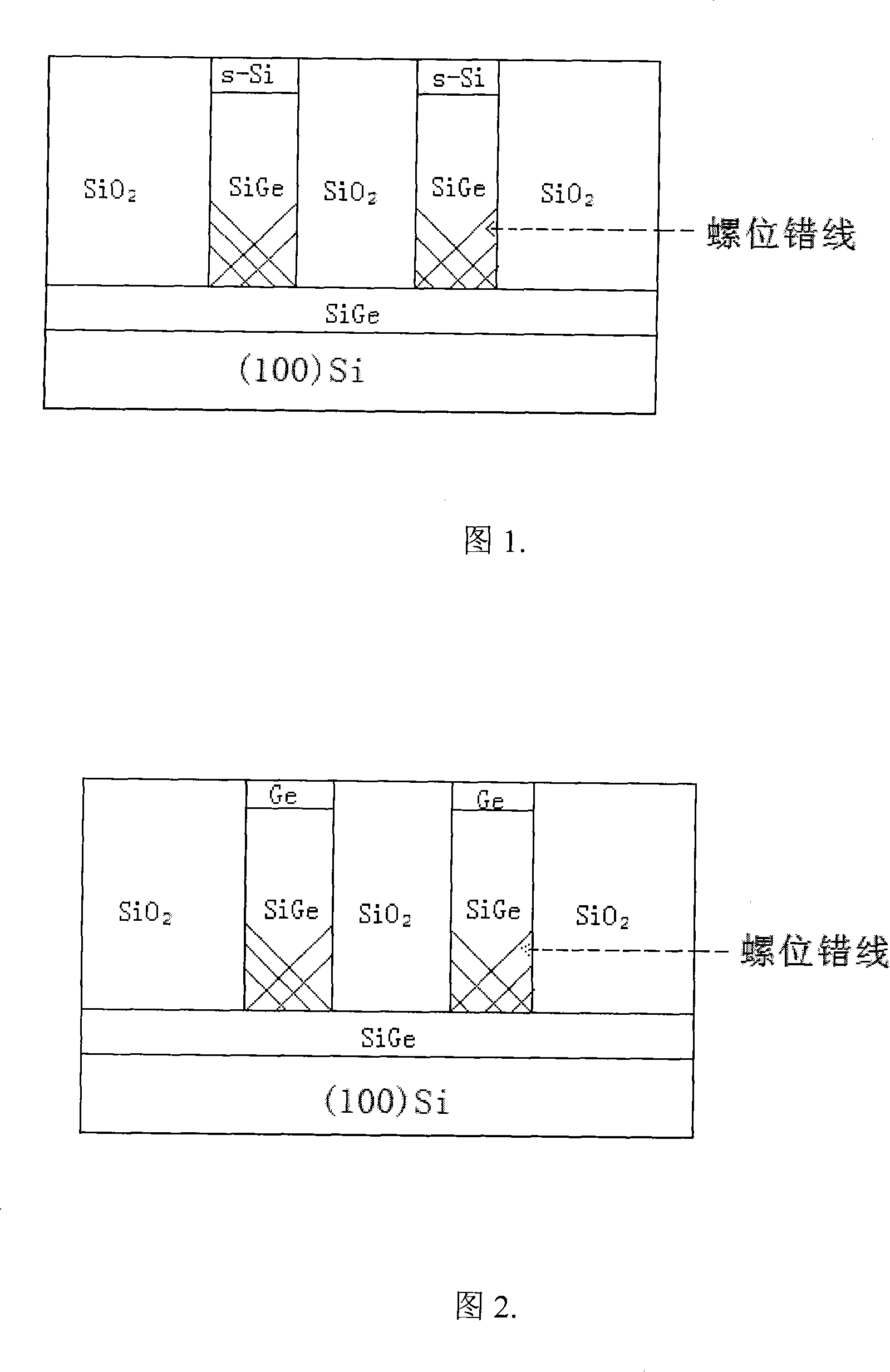A method for obtaining low bit discrepancy density extension thin film via using neck down extension
An epitaxial thin film, low dislocation technology, used in electrical components, semiconductor/solid-state device manufacturing, circuits, etc., can solve the problems of high cost, thick buffer layer, poor compatibility, etc., and achieve the effect of good surface roughness
- Summary
- Abstract
- Description
- Claims
- Application Information
AI Technical Summary
Problems solved by technology
Method used
Image
Examples
Embodiment Construction
[0037] The invention provides a method for obtaining epitaxial film with low dislocation density by using neck-in epitaxy. The method uses the preparation methods of deposition, selective epitaxy and thermal oxidation to manufacture a silicon germanium substrate with low dislocation density and a channel with high mobility.
[0038] 1-3 are schematic cross-sectional views of growing strained silicon, germanium, and strained germanium channel structures on silicon germanium substrates, respectively. The manufacturing process of these three structures is: first deposit a layer of silicon germanium with low germanium content on the surface of the silicon wafer, oxidize the silicon germanium layer to increase the proportion of germanium in it; grow thick silicon germanium on the concentrated silicon germanium Silicon dioxide layer, photolithography and etching this layer of silicon dioxide to obtain a series of hole structures, and the bottom of the hole is a silicon germanium lay...
PUM
 Login to View More
Login to View More Abstract
Description
Claims
Application Information
 Login to View More
Login to View More - R&D
- Intellectual Property
- Life Sciences
- Materials
- Tech Scout
- Unparalleled Data Quality
- Higher Quality Content
- 60% Fewer Hallucinations
Browse by: Latest US Patents, China's latest patents, Technical Efficacy Thesaurus, Application Domain, Technology Topic, Popular Technical Reports.
© 2025 PatSnap. All rights reserved.Legal|Privacy policy|Modern Slavery Act Transparency Statement|Sitemap|About US| Contact US: help@patsnap.com


